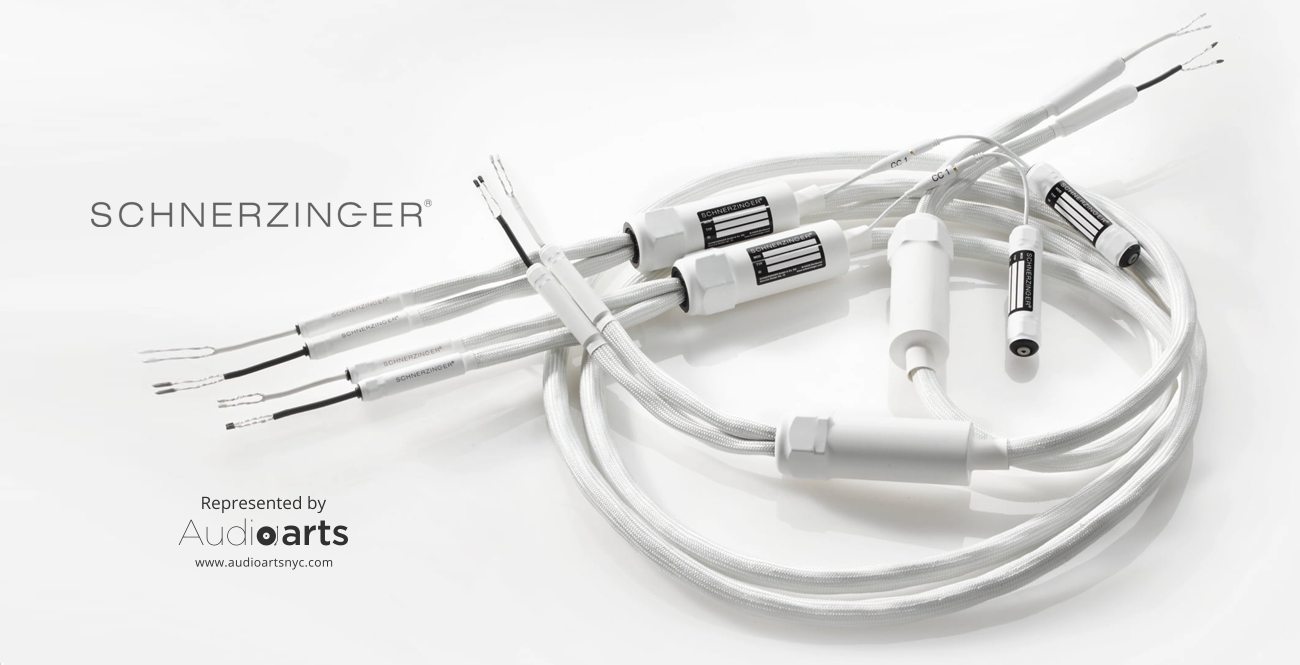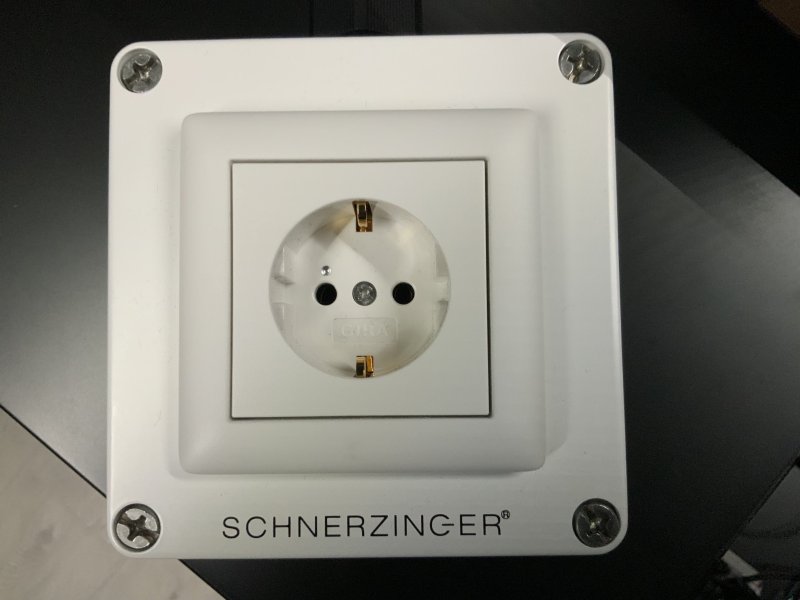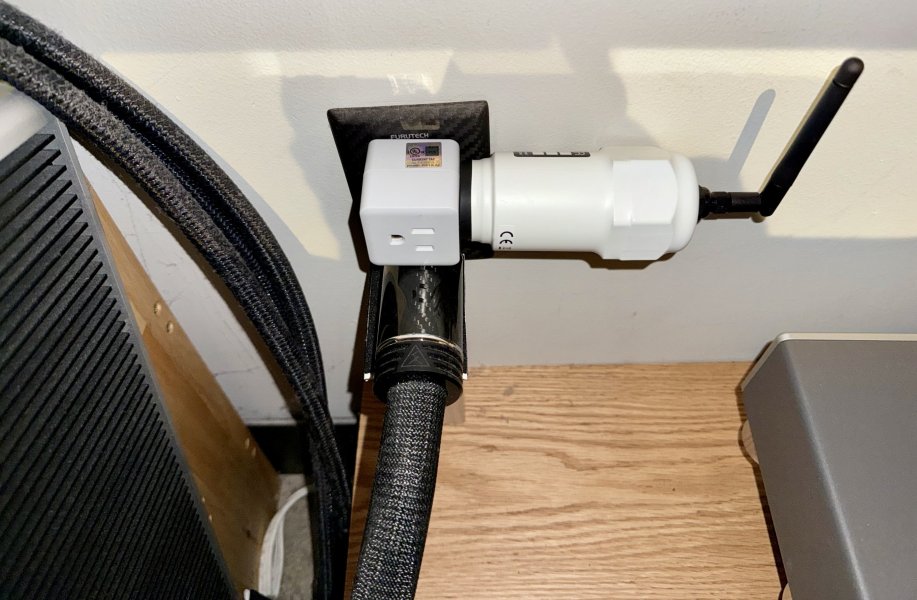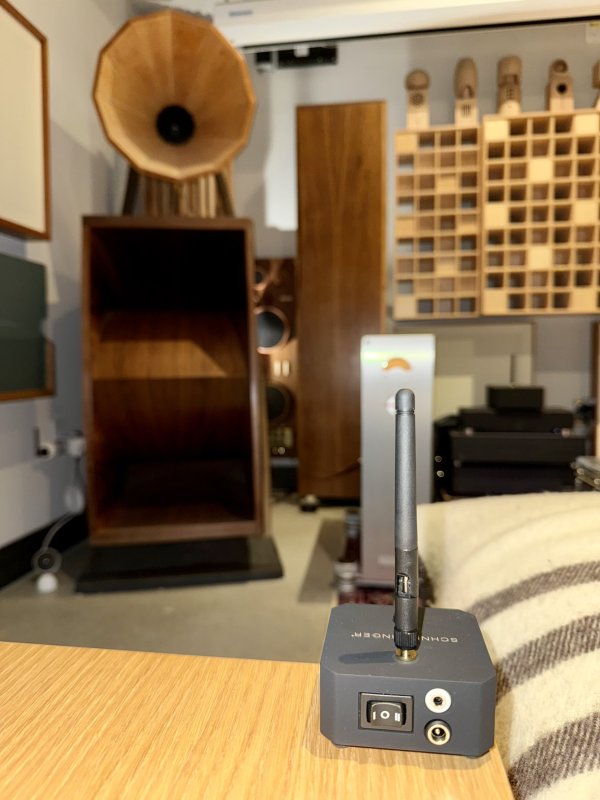I have the amazing Giga protectors already for a long time, and have tried them in the different listening positions (or maybe I should say many) and finally ended up with both behind but outside the speakers positions, closer to the wall then the speakers.If I remember correctly, the GIGA protector was the second Schnerzinger GIGA CANCELING product after the CLEANER and the first for the room (EMI and Piccolo did not yet exist). The GIGA protector consisted of two devices, each with 13 switches and large antennas, which were intended to suppress interference from the entire listening room and were usually positioned in opposite corners of the room. The manual is still available on the website, the product was sold until 2022. By the way, the GIGA protector is still part of the video, which explains the Schnerzinger GIGA CANCELING technology on the website.
I first saw the GIGA Protector in Munich in 2014.
I remember the High-End 2014 in Munich particularly well, because I visited the fair for the first time together with my current wife. At the Zellaton booth we met Manuel Podszus (Speaker Developer and Co-Manager Zellaton) and Michael Schwab (Sales). I will never forget how enthusiastic and proud they were. They couldn't believe how great their products sounded at the show. The then still quite new cooperation with Schnerzinger had raised their trade fair demonstration to a level that had not previously been thought possible. This joy of the two men was such a beautiful and impressive experience, I cannot forget their almost childlike happiness. We had been happy with them.
Later the portfolio for in-room interference suppression was expanded. In addition to the GIGA protector for the entire room, there was first the EMI for near field area and then the Piccolo for the targeted interference suppression of critical interference field peaks. Around 2020 or 2021, the Multi Guards offered an effective and comprehensive ROOM SHIELD by coupling in the room. Perhaps this is the reason why the GIGA Protector was taken out of the program in 2022.
I am excited about the presentation of the successor.
Schnerzinger is tremendously creative. If there really is a new product, then this will also bring clear progress. So far, no Schnerzinger recommendation had disappointed me.
What I want to say is that it makes sense to try any Schnerzinger product in a different set-up. I’m always surprised how one can clearly notice the audible differences.





